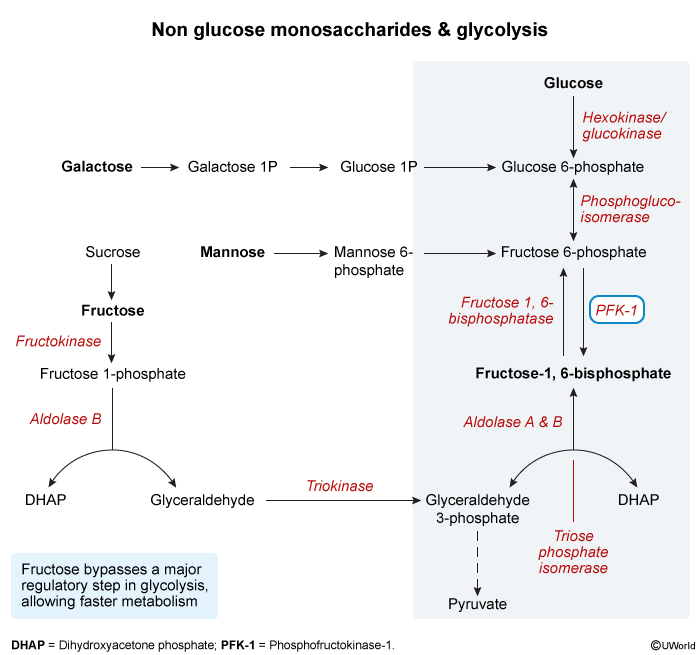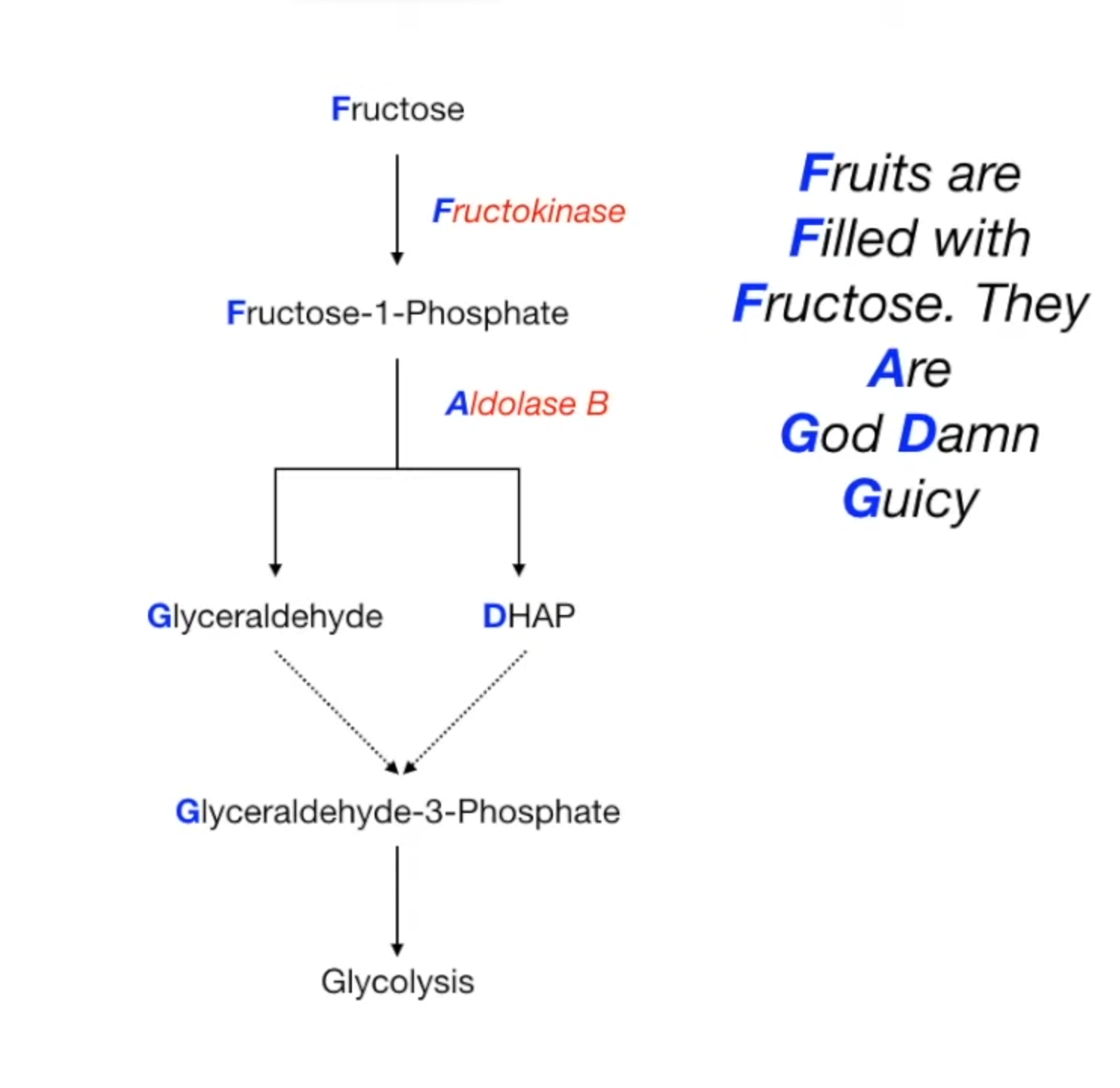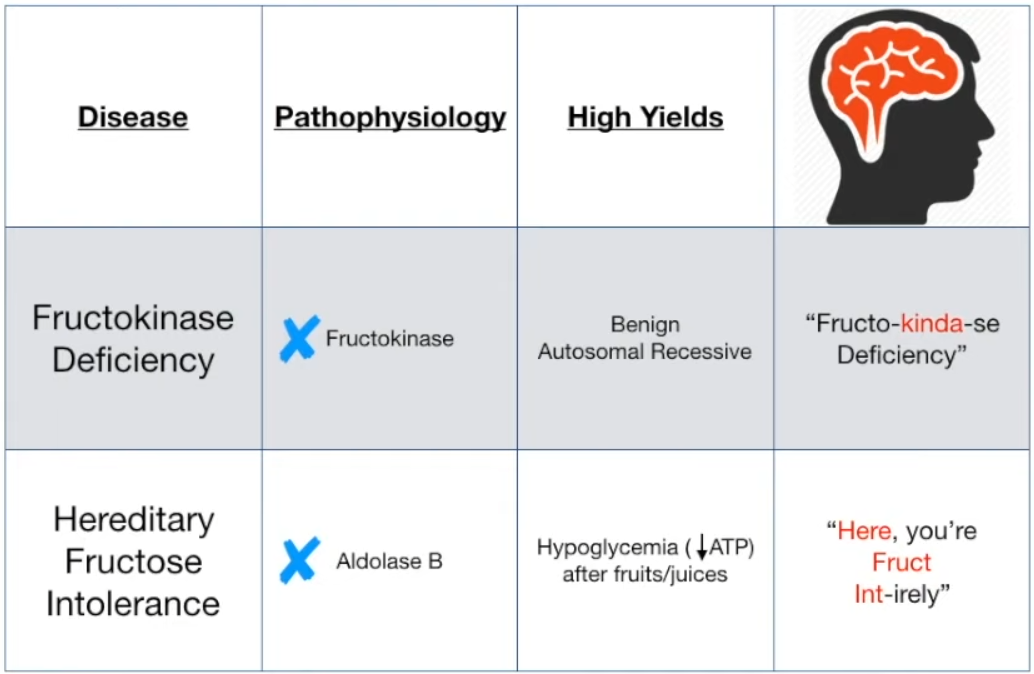


Essential fructosuria
- Increased conversion of fructose to fructose-6-phosphate by hexokinase (hexokinase becomes the main pathway for turning fructose to fructose-6-phosphate)
- Unphosphorylated fructose does not get trapped in cells → remaining excess fructose → excretion of fructose in urine
Mnemonic
Fructokinase deficiency is kinder
Hereditary fructose intolerance
- Accumulation of fructose-1-phosphate → decrease in available phosphates → inhibition of glycogenolysis and gluconeogenesis → hypoglycemia
- Phosphates are trapped in F-1-P, can’t be used in elsewhere
- Clinical features
- Symptoms begin when the child is weaned off breast milk and starts consuming food that contains sucrose (e.g., fruit, juice, honey)
- Fructose are like poisonous to them
- Bloating, sweating, vomiting
- Failure to thrive
- Jaundice (can progress to cirrhosis)
- Bleeding tendency
- Severe hypoglycemia: seizures, hypotonia, poor feeding, cyanosis, irritability
- Hepatomegaly
- Symptoms begin when the child is weaned off breast milk and starts consuming food that contains sucrose (e.g., fruit, juice, honey)
- Treatment: lifelong adherence to a fructose-free, sorbitol-free, and sucrose-free diet
- Some of the ingested sorbitol gets broken down into fructose during digestion.
- Sucrose, also known as table sugar, is a disaccharide sugar molecule. It’s made up of two simpler sugars: fructose and glucose.